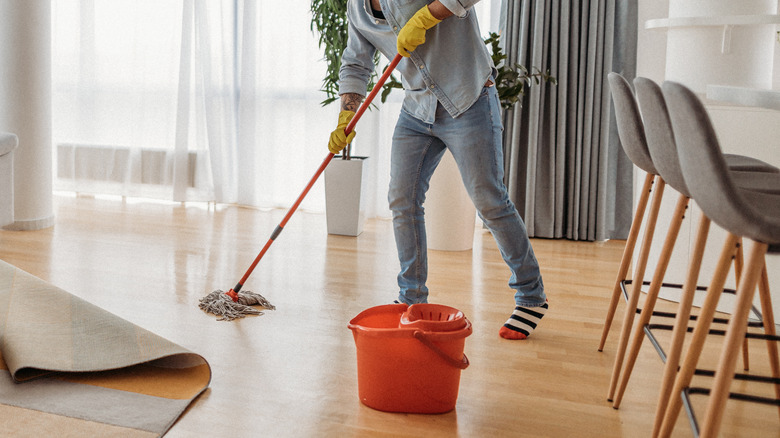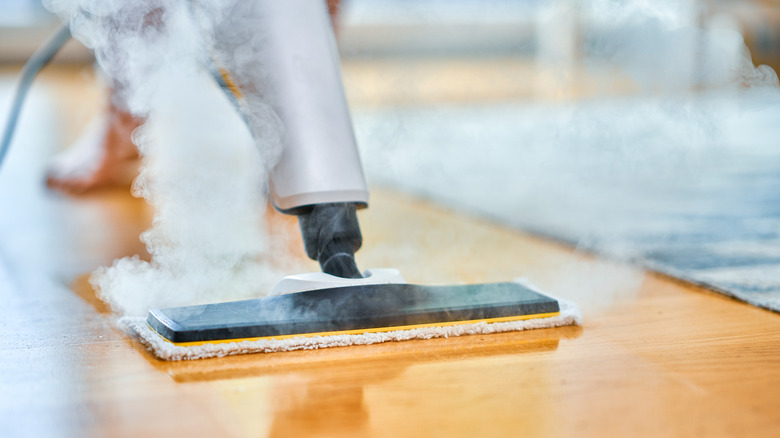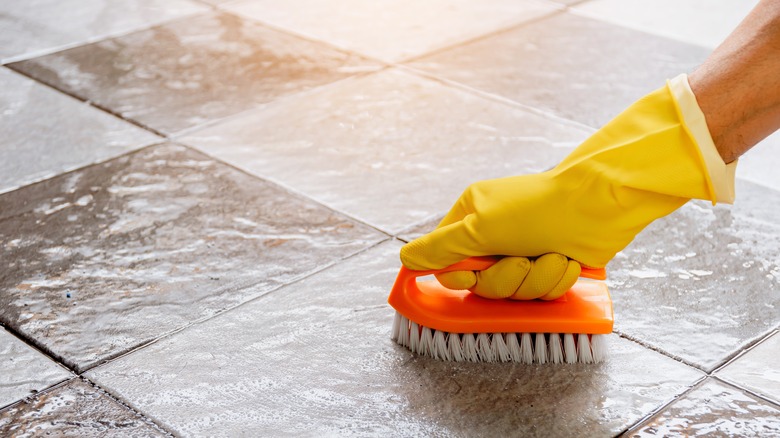The Truth About Cleaning Your Floors With Boiling Water
Floors can be a challenge to keep clean. We all spill things from time to time and have messes that need to be cleaned. A regular floor cleaner is usually all you need to get the floor back in optimal condition, but sometimes the dirt is so stuck on that you need a little extra boost. While boiling water can help rid surfaces of gunk and grime, it can also damage certain floors.
When turning to mops and buckets to do a deep floor clean, it's easy to see how the hotter you make the temperature of the water, the more easily dirt slides right off. However, you need to make sure the water isn't too hot.
There's no doubt that boiling water can help remove substances that have been stuck for a long time. Yet this can cause long-term damage to certain types of floors. If you have wood or laminate floors, you should avoid using very hot or boiling water to clean them.
What boiling water does to wood and laminate floors
Wood floors can expand with heat and humidity. If you clean wood floors with boiling water, it can cause the floorboards to continually expand and contract. Over time, this can result in floorboards cracking and moving, leading to uneven floors. The same goes for steam cleaning wood floors. In essence, steam cleaners expose floorboards to extremely hot water almost as much as mopping with boiling water. It also creates an environment of humidity that seeps into the wood.
Another way boiling or hot water can ruin wood floors is by melting the finish. The shine and glow that is so sought after in wooden flooring can break down and even disintegrate from hot water. This is especially the case when hot water is repeatedly used over time.
Similarly, laminate floors can experience breakdown from hot water and react poorly to excessive heat. Like wood floors, steam cleaning can wear down the shiny top layer. That can result in damage to the floor underneath.
Use hot water on tile or porcelain floors
When it comes to tile or porcelain floors, using hot water can help remove stains and dirt without harming the flooring. However, boiling water is not necessary to get a good deep clean. Simply let the hot water run a minute or two until it reaches its peak heat, and then fill up a bucket and add your favorite floor cleaner or even some dish soap.
Before you start, sweep up stray dust and particles and then mop the floor. Go over each tile and allow the hot water to remove the top later residue. If you have stuck on dirt, you want to remove that next.
One helpful tool when cleaning dirty tile or porcelain floors is a bristle brush. The combination of hot water and a bristle brush will loosen dirt and grime and help it become unstuck. If you don't have a bristle brush, a regular old toothbrush can often do the trick and will work with most stains and grime. Then you can use a microfiber cloth to scoop up the leftover remnants. After mopping tile floors with hot water, you can let them air dry.


